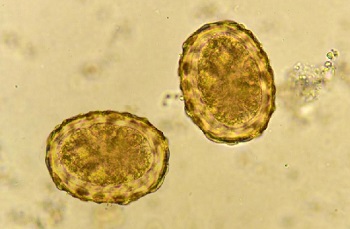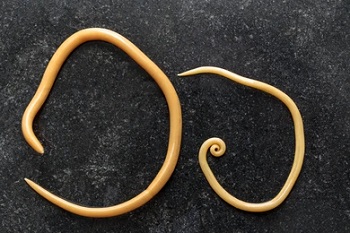Ascaris lumbricoides - Epidemiology, Reservoir, Transmission, Laboratory Diagnosis, Treatment
Epidemiology of Ascaris lumbricoides
Epidemiological studies have shown Ascaris lumbricoides are worldwide in distribution and nearly one-fourth of the world's population have been infected at some point in their lives.
Ascariasis is much more common in developing countries, mostly in areas with poor sanitation.
Reservoir, Source of Ascaris lumbricoides
Since humans are the only host of Ascaris lumbricoides, man is the only reservoir for the parasite. Moreover, infected humans are not directly contagious while human feces are the source of infection.
Transmission of Ascaris lumbricoides
For the eggs of Ascaris lumbricoides to be infectious, it needs at least 2 to 3 weeks to become embryonated.
The route of transmission for Ascaris lumbricoides infection is via the fecal-oral route. Other routes include:
consumption of water or raw vegetable contaminated with embryonated eggs
geophage (eating soil) by mostly children
direct ingestion of roundworm eggs through contaminated fingers, toys, utensils, etc
Laboratory diagnosis of Ascaris lumbricoides
The laboratory diagnosis of Ascaris lumbricoides is made by demonstration of eggs in the feces or adult worms itself. However, diagnosis of ascariasis has been proved to be difficult the clinical manifestations are similar to that caused by other microbial agents.
Sample
stool
sputum
gastric aspirates
bronchial aspirates
vomitus
Microscopy
Stool microscopy
Since a large number of eggs are released along with the host feces, examination of stool by direct microscopy and demonstration of Ascaris lumbricoides in the sample confirms ascariasis diagnosis.
Direct wet mount microscopy
the wet mount for Ascaris lumbricoides is prepared by mixing stool sample with saline, iodine, or lactophenol cotton blue (LPCB)
ascariasis is confirmed by the demonstration of the bile-stained eggs, golden brown oval to subspherical shaped eggs
Stool concentration
the formalin-ether method or salt flotation of stool is used for the concentration of the specimen for the detection of eggs of Ascaris lumbricoides
* Eggs are not found in the stool samples if the infection is pre-patent, extra-intestinal, or only male Ascaris lumbricoides are present.

Ascaris lumbricoides eggs (Source: Laboratory Tests.org)
Sputum microscopy
Freshly collected sputum from the individuals suspected of pulmonary ascariasis is collected and viewed under a microscope. Mostly in heavy infections L3 and/or L4 larvae can be demonstrated by direct wet mount microscopy.
* gastric aspirates as well as bronchial aspirates can be examined by direct wet mount microscopy.
* Adult roundworms can be seen in feces and vomitus after administration of anthelmintics.
Serodiagnosis
Serological test for diagnosing Ascaris lumbricoides infection is mostly done in extra-intestinal infections (Ascaris pneumonia) and seroepidemiological studies.
Some widely used serological test methods to test specific host antibodies include:
Microprecipitation on larvae
Indirect haemagglutination (IHA)
Immunofluorescent antibody (IFA)
Imaging Methods
Imaging methods can show adult worms in the intestine and the bile ducts. Widely used methods are:
X-ray
Ultrasound
CT scan

Ascaris lumbricoides adult female (left), male (right) (Source: Shutterstock)
Treatment of Ascaris lumbricoides
Ascaris lumbricoides infection is treated by the use of anthelminthic drugs such as mebendazole, pyrantel pamoate, and piperazine citrate.
Care must be taken to administer the correct dose of anthelminthic drugs as ineffective acaricidals may induce the migration of adult worms from the intestine resulting in complications.
In the case of allergic pneumonitis caused by migrating larvae, only symptoms must be initially treated.
Prevention, and Control of Ascaris lumbricoides
Prevention, and control of Ascaris lumbricoides are done by:
Individual prophylaxis
Individual prophylaxis of Ascaris lumbricoides is done by
improved personal hygiene such as proper washing of hands with soap after defecation and before eating food
treatment of water before drinking such as boiling, filtering the water used in a 0.22-micrometer membrane, iodination with tetracycline hydro per iodide
drinking bottled water while traveling to areas endemic to ascariasis
if salad is to be consumed, treat the vegetables with acetic acid or vinegar for 15 minutes
not performing sexual acts that involve fecal-oral contact
Community prophylaxis
Community prophylaxis of Ascaris lumbricoides is done by
improvement of the water management system to avoid fecal contamination
improvement of sanitation by installing latrines for proper disposal of human feces
cease the use of human feces as fertilizer